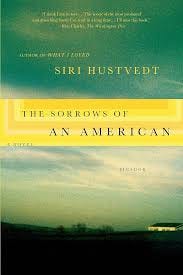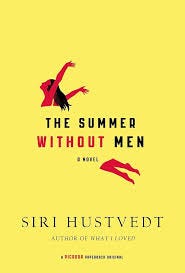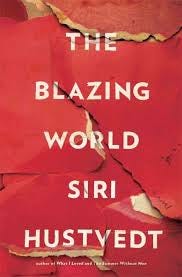A few — or many — years ago I read an interview in which a writer (whose name I have completely forgotten) argued in favor of resubmitting your work to editors and agents who had previously rejected it. “There’s a chance you might teach someone how to read your work this way,” the writer said. This was a new idea to me. It was a very bold approach to dealing with rejection.
I can’t speak to how realistic or not this approach is when it comes to getting published, but I think there’s something to it when it comes to reading someone’s published work. Contrary to the advice that you shouldn’t waste time on books that don’t grab you quickly enough, there’s a case there for getting to know a writer and not going with your initial impression.
Sometimes you pick up a book at just the wrong time. You glide over the surface of the words with a sense of something there that you can’t get to. The book is like a frozen lake: you have a sense of a depth there that is out of your reach. More often than not, you end up thinking of the book — and more than likely, its author as well, and thus also the author’s other work — as being “not for you.”
It wasn’t until my thirties that I started mistrusting that impression and revisiting some of my frozen lakes. Not to get too carried away by this image, but I suppose patience and curiosity came together for me as a contraption that broke the ice.
So it was with Siri Hustvedt whose The Blazing World left me cold when I first picked it up a few years ago. I gave up about half-way, concluding that this review about captured the experience also for me. Today I still find that review amusing and… not inaccurate, but I also returned to the novel and read it with great enjoyment the second time around. It was just not a question of timing — I needed four other Hustvedt novels (and some of her essays on art) — to look past the pretentiousness and find delight in The Blazing World.
Writing this, I’m beginning to think I could use a nifty graph to chart what happened between the two readings (if I come up with a napkin sketch, I might add it later).
My “Hustvedt education” at the hands of the author started with What I Loved, which, frankly, was for the first hundred pages or so headed to the heap of resignation after The Blazing World. But then it grabbed me by the lapels, as if the novel’s Leo Hertzberg were suddenly giving me a private art history tutorial that I wanted to ace, and I kept reading, revisiting Goya paintings, then looking up art Leo mentioned that I was not familiar with, then reading until I almost melted into the last page. So good it was.
Then I picked up Mysteries of the Rectangle, enjoyed the writing about art without the persona of Leo Hertzberg and a plot, and figured that maybe that was it for me and Hustvedt.
And then I reached my first summer of motherhood and found myself craving fiction that would be like a challenging but friendly interlocutor who would appear during the baby’s naps and talk to me about art and life. So I picked up The Sorrows of an American.
In the dark quiet hours between the baby’s and my bedtime I traveled to Minnesota with Erik Davidsen, looking at his empty family home and remembering a fictional father whose memoir was woven out of excerpts of Hustvedt’s father’s writing (for which, as Hustvedt explains in the Acknowledgments, her father gave his permission). There was art, too, of course: uncanny dolls meticulously acting out old tragedies, dream paintings that trapped fears, and photography that trapped the photographer, and then a movie that trapped its writer deep into its tangled melancholies.
And I struggled to think of another novel that articulates such explicit desire to overcome loneliness… Maybe only What I Loved.
After turning the last page I immediately reached for The Summer Without Men.
I wanted more, and was willing to risk finding repetitive elements in that next novel. But while there was more art and more Minnesota and New York City in tension, Mia Fredricksen was a surprisingly eighteenth-century-inspired narrator. A Tristram Shandy of early 21st-century heartbreak. And here, too, art as a language used by Hustvedt revealed a surprising dimension. Shall I call it phatic communion? The subversive quilts of an older lady and the earnest poems of the teenagers in Mia’s class seemed to call out to the reader: can you see what I am in some part of yourself?
Without those two novels I would not have returned to The Blazing World to find in Harry Burden not only an unfulfilled artist but also a mother and a friend. It’s the tenderness of the writing – somewhat hidden from my first reading behind ambition (Harry’s? maybe also mine?) – that I finally discovered and appreciated this time. I’m glad I got “schooled” by Hustvedt to read her work. Erudition binds together so much, but sometimes you can forget that erudite prose is not merely a display or a game, and not merely there for the author’s intellectual recognition. Like the boxes that so many of Hustvedt’s artists love to create, her many interests create small worlds. It takes patience and attention to walk in them.





